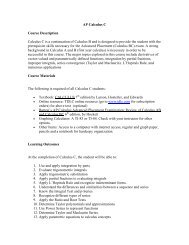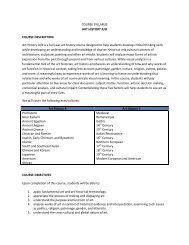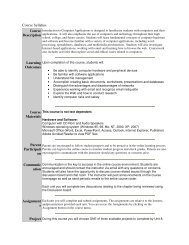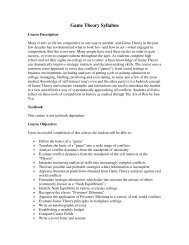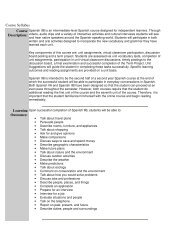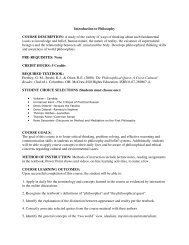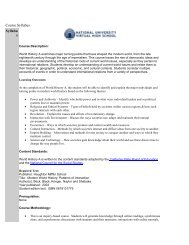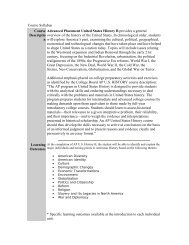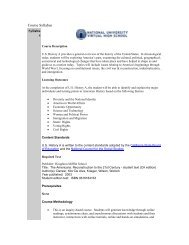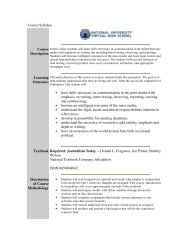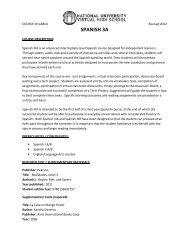AP European History A - National University Virtual High School
AP European History A - National University Virtual High School
AP European History A - National University Virtual High School
Create successful ePaper yourself
Turn your PDF publications into a flip-book with our unique Google optimized e-Paper software.
and explain why his movement spread so quickly across Europe.<br />
• Identify the main elements of Lutheranism, Zwinglianism, Calvinism, and<br />
Anabaptism, and describe in what ways they differed from each other and<br />
from Catholicism.<br />
• Explain the impact Protestant Reformation had on the society of the<br />
sixteenth century.<br />
• Identify the measures the Roman Catholic church took to reform itself and<br />
combat Protestantism in the sixteenth century.<br />
• Explain why <strong>European</strong>s began to amass overseas empires during the<br />
sixteenth century and describe the effects this experience had on both the<br />
<strong>European</strong>s and conquered peoples.<br />
• Draw conclusions about the role of religion in the <strong>European</strong> wars of the<br />
sixteenth century and the Thirty Years’ War of the seventeenth century.<br />
• Distinguish how the religious policy, the foreign policy and the governments<br />
of Philip II of Spain and Elizabeth I of England differed.<br />
• List and describe the economic and social crises Europe experienced<br />
between 1560 and 1650.<br />
• Identify how the turmoil in Europe between 1560 and 1650 contributed to<br />
the witchcraft craze and to the artistic and intellectual developments of the<br />
period.<br />
• Describe the theories of government proposed by Jacques Bossuet,<br />
Thomas Hobbes and John Locke, and explain how their respective<br />
theories reflected the concerns and problems of the seventeenth century.<br />
• Explain absolutism in theory and describe how its actual practice in France<br />
differed from the theory.<br />
• Identify the developments that enabled Brandenburg-Prussia, Austria and<br />
Russia to emerge as major powers in the seventeenth century.<br />
• Identify the main issues in the struggle between king and Parliament in<br />
seventeenth-century England and explain how they were resolved.<br />
• Describe the role the Netherlands played in the political, economic and<br />
artistic life of the seventeenth century.<br />
• Trace the developments during the Middle Ages and Renaissance that<br />
contributed to the Scientific Revolution of the seventeenth century.<br />
• Identify what Copernicus, Kepler, Galileo and Newton contributed to a new<br />
vision of the universe and describe how it differed from the Ptolemaic<br />
conception of the universe.<br />
• Draw conclusions about the role of women in the Scientific Revolution.<br />
• Explain the problems the Scientific Revolution presented for organized<br />
religion and how both the church and the emerging scientists attempted to<br />
solve these problems.<br />
• Identify how the ideas of the Scientific Revolution were disseminated and<br />
the impact they had on society.<br />
• Identify the intellectual developments that led to the emergence of the<br />
Enlightenment.<br />
• List the leading figures of the Enlightenment and identify their main<br />
contributions.<br />
• Describe the type of social environment in which the philosophes thrived<br />
and the role that women played in this environment.<br />
• Explain the innovations in art, music and literature that occurred in the<br />
eighteenth century.<br />
• Draw conclusions about how popular culture and popular religion differed<br />
from high culture and institutional religion in the eighteenth century.<br />
• Define what historians mean by the term enlightened absolutism and<br />
explain to what degree eighteenth century Prussia, Austria and Russia



